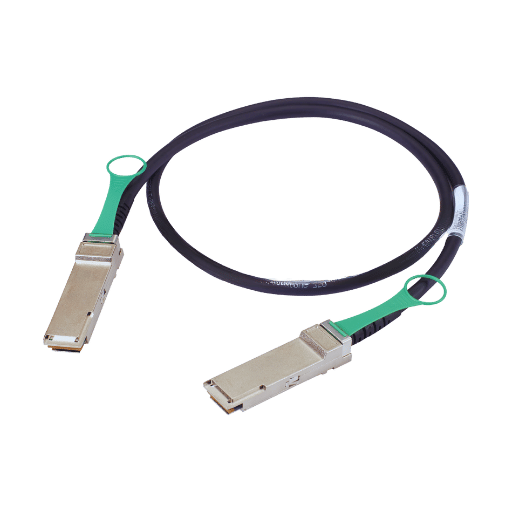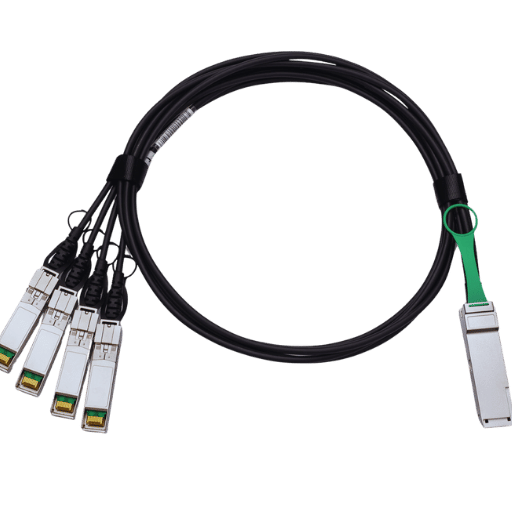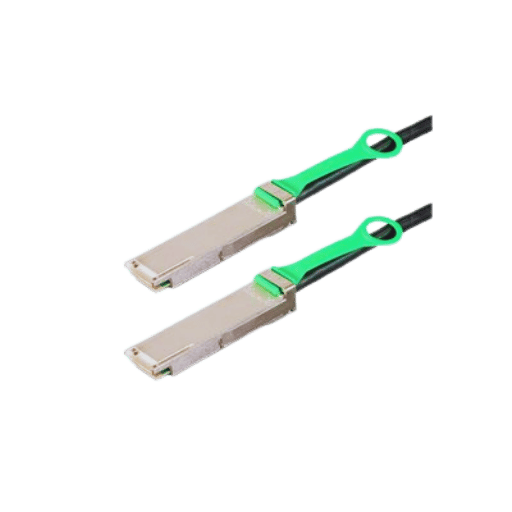In high-speed networking, QSFP cables have become an essential device in optimizing data transmission performance in different utilized settings. This article aims to survey QSFP cable systems in detail, shedding light on their roles, classification, and efficient utilization of various devices in appropriate situations. It will include the improvements made in the design of cables, which now enable the usage of several protocols and engage in boosting networks that many have grown to appreciate. Computing professionals and enthusiasts who want to shed some light on QSFP cables and their importance in contemporary information traffic networks will find enough material in this publication.

When we talk about a QSFP technology, this generally means a small transceiver commonly used in networking applications and a great variety that is hot pluggable—developed to accommodate transmission speeds of up to 40 Gbps to 100 Gbps and more, usually in the form of QSFP modules, using several parallel channels to enhance the bandwidth capacity. This technology makes it possible to use devices with mathematical devices integration into data centers, enterprise networks and systems, and telecommunications where wiring is built into existing structures. Furthermore, it is also relevant that these QSFP cables can come in different types, including DAC cables and optical fiber cables, depending on the type of connection and length required. Using the QSFP technology enables the effective operation of networks while limiting power usage and rack space requirements; hence, it has become an ideal option in current communication technologies.
The addition of these features upgrades the reliability and efficiency of modern communication; that is why it isn’t easy to imagine high-speed data transmission without cables QSFP.
QSFP cables find applications in many high-performance networking activities, notably passive copper cables requiring next-generation performance. One of the significant use areas is the data center, which provides a high density of connections between switches, routers, and servers, allowing high data transfer required in cloud computing and big data analytics. Further, QSFP cables are also extensively used in high-frequency trading areas, which require low latency and high bandwidth for quick and perfect order execution. Another notable application area is telecommunications, where QSFP technology comprises the structural fabric of telecommunications, conveying large amounts of data over large distances without degeneration. These applications also show the importance and range of use of QSFP cables within today’s technological infrastructures.

The Direct Attach Cable (DAC) is a short-range cabled connection of two distinct networking equipment primarily used in data centers. More often than not, made of copper, passive DACs are those that do not incorporate any active circuitry, whereas the latter do. For example, passive DACs offer powerless data transmission by relying on the copper cable’s physical properties, making it inexpensive for applications below 5 meter range. In contrast, active DACs utilize building circuitry to lengthen the transmission range and enhance the quality of received data, with more effective lengths of 15m and above. The DACs resolve, among other problems, the issues of fast data transfer by reducing latency and power consumption response time while maintaining bandwidth, which is due to the design features of the interconnects.
Another advantage of Direct Attach Cables (DACs) is that they can and are increasingly being deployed for networking. To begin with, these cables offer minimal delay, ensuring quick and efficient data transfer, which is very important for performance-based situations. Secondly, a passive version of their interface does not need any additional power supply, which helps reduce overall costs and minimizes power use. In addition, they are usually cheaper in terms of the use of DACs instead of optical cables, thus being more inexpensive for data centers. They also mercilessly clutter the wires around the cores with their small form factor size and facilitate installation in rack substations. Finally, DACs are good at preserving the signal over a relatively short distance, improving the network’s reliability.
Several distinctions can be observed in Direct Attach Cables (DACs) when compared to Active Optical Cables (AOCs), and these differences are crucial for their application in certain networking areas. DACs use electrical signals that pass through copper cable, which are favorable due to their low cost, low latency, and low power requirements for under 15 meter short distances. AOCs often use optical signals, which help transmit data over longer distances, over 100 m, whereas high bandwidth and signal quality are necessary for 10g applications. That being said, AOCs are also more expensive than most DACs and do require extra energy for the conversion. Hence, picking one over the AOC or the DAC will depend on the circumstances such as how far the devices will be placed from each other, how much money is available, and how complex the installation is.

Passive Direct Attach Copper (DAC) cables are high-speed cables usually used for data communications and provide a direct link between devices such as switches, routers, and servers. Passive direct attach cables employ twinax copper cable for short-distance applications (maximum 7m). Due to the design, these passive twinax cables save overall size and installation time compared to standard copper cables. Besides, these do not waste energy, making them environmentally healthy. Passive DAC is fully passive and contains no electronics; it has very low working latency and is highly dependable, which is vital for such high-performance environments. One way to computer networks serving the data centers or also suitable for high-density cabling applications passive. Passive DAC offers low-cost interconnect solutions for high-speed networking devices, making it high-performance.
Active Optical Cables (AOCs) are advanced interconnect solutions that transmit data through optical fiber technology. It includes active electrical and optical elements, e.g., transmitter and receiver modules, which allow transmission in both electrical and optical signal formats. AOCs are primarily utilized in areas encompassing high-speed networking technologies and can transmit data for distances beyond more than 100 meters with improved bandwidth and signal quality. They are beneficial in situations with high data rate requirements, such as a data center or compute high-performance systems. Although they are more expensive than passive options such as Direct Attach Cable (DAC), they can be used wherever cable management and total cable weight are concerned, as AOC is designed for a few cables.
Both copper and fiber optic cables have certain advantages, and it is important to highlight their key differences. For example, twisted pairs and coaxial cables are cheaper and easier to lay down comparatively; hence, they are effective in short-range communication and within consumer devices. However, they are distance-bound and are affected by electromagnetic interference, which is detrimental to signal clarity, especially when distances between terminals are long. Contrariwise, fiber optic cables work on the principle of data transmission through light, thereby increasing data bandwidth and enabling faster data transfer over longer distances without degradation of quality. Magnetic waves do not influence them and enhance data protection since optical signals are difficult to access. The only disadvantage of fiber is that its installation cost is higher than that of copper; however, other costs tend to be lower in the future, including maintenance and people supporting other networks’ demands. Hence, fiber optics have become a perfect alternative in networking at enterprise levels or data-boosting organization uses.

Together, the advantages of the Cisco QSFP-H40G-CU1M cable stand in most, if not all, modern requirements of networks. The first one is the active performance up to an extreme speed of 40 GBASE Ethernet, which is helpful in operative environments where there are a lot of data processes, especially in data centers. Since it is its active optical configuration, there is no performance drop when the cable is used within a meter distance, as is the case with many copper cords, whereby quality deteriorates. Moreover, the QSFP-H40G-CU1M utilizes a hot-swappable design, which prevents the need to switch off the system or server being worked upon. The use of the internal copper cords has much less wattage usage than standard practice which not only saves a lot of power but also cuts costs of operation. Finally, since this is a dependable Cisco product, he has an excellent support service and multiple compatibility with devices of Cisco networks, which is very important for integration and long-term use in the enterprise.
This cable has been optimized for rugged usage in several Cisco devices, including Nexus and Catalyst series switches, many other Cisco routers, and Cisco-compatible hardware. Likewise, compliance with the industry standard IEEE 802.3 and QSFP+ Specification allows interconnecting other compliant devices, thus making it easy to build a complete system. Furthermore, supporting the usage of this cable within Cisco systems is a plethora of support documents, which ensures that network engineers can set up and maintain their networks without much difficulty. Users allay their fears as Cisco testing procedures are highly robust, reprovisioning their operations and compatibility in every networking environment.
Various procedural tests and performance indicators have been set and verified during the construction of the Cisco QSFP-H40G-CU1M cable, ensuring its reliability. This cable is designed to work for high-speed transfer rates with the ability to maintain transmission rates of 40 Gbps over its design range. This type of cable is immune to EMI and crosstalk which is generally caused by using this kind of cable in such examined conditions. At the same time, the high-performance optical and construction materials will help avoid increasing the delay time and residence time evenly, which is essential, as all critical information transfers will be performed without a hitch and any surprises. Consequently, the reliability of performance in critical situations allows companies to turn to the use of QSFP-H40G-CU1M even in the needs of business on a mission.

The QSFP28 cable system, or QUAD Small Form-factor Pluggable 28, comes with its own set of advantages that improve the performance and efficiency of the network. To begin with, it presents a remarkable data rate of up to 100 Gbps, making it appropriate for high-density data service applications such as those found in data centers or enterprise networks. The QSFP28 connector incorporates improved thermal characteristics and decreased power consumption, essential for controlling energy costs in large-scale installations. Moreover, the compactness of the cable permits higher port density and, thus, more connection points in a limited physical area.
Also, sections, modules, and QSFP28-type cables can be used together with other optical and copper transmission methods, which makes it possible to choose any management deployment option due to the characteristics of the network. Improvement of signal integrity and minimization of delay is attained due to modern engineering, which in turn contributes to margin communication over long distances. Last but not least, Link Aggregation support features plus backward compatibility with previous QSFP+ configurations make it easier to sell the QSFP28 as more use cases continue to drive up demands in more sophisticated networking.
The QSFP28 cable technology is designed to meet the requirements of a 100 Gbps data rate and has room for more advances in the expansion of optical systems, particularly Amphenol connector applications. This allows proper bandwidth use by transmitting it in several lanes, which is essential in a high-performance cable environment where cables are used to exploit next-generation performance. With the ever-increasing need for networking, societies are working round the clock to improve and develop new versions of QSFP technology that surpass 100G and bridge towards 200G, 400G. This technological growth will depend on the enhancement of signal integrity and transmission efficiency, and the QSFP28 technology already provides most of the basis for this, thus allowing positive growth and management in network systems that cause high levels of data traffic.
The QSFP28 cables are essential in several high-density networking areas, especially in data centers, cloud computing, and enterprise networking environments. It is often used as a connecting link between switches, routers, and servers for quick, high-bandwidth data transfers required by virtualized applications and large-scale data processing. The constraints of low latency communication in QSFP28 cables are exploited in HPC applications, where intensive computing tasks are performed. They are also used in telecommunications to support the core of high bandwidth networks that service providers require. The flexibility of QSFP28 cables to allow either optical or copper connectors further broadens their usage in different network systems as they make it possible to incorporate such cables in the current system.

Several points must be considered when deciding on the appropriate length for the QSFP cables to prevent resource waste and improve the network setup’s efficiency. Normal QSFP28 cables range from 1 meter to 10 meters in length to suit different installation demands.
To sum up, your decision must also conform to the particular configuration of your network in terms of distance and loss of quality. It is noteworthy that maintaining the right size improves performance and increases computer performance scaling.
Several aspects should be taken into account to establish the appropriate QSFP cable length with regard to performance and deployment:
Careful planning regarding these factors, in particular, allows users to take the appropriate steps to make their network more reliable and scalable.
Proper network access management can make a difference in the functionality and appearance of a networking environment. The following are some of the best practices for cabling management:
By following these strategies, this team seeks to perform better, spend less maintenance time, and prolong the life cycle of their cabling assets.

A: A QSFP (Quad Small Form-factor Pluggable) cable is a high-density, high-speed cable designed for use in a data center or networking environment. It can transmit four data channels within one connector.
A: Passive copper, active copper, and fiber optic are the basic categories of QSFP cables. Each category has unique capabilities, such as distance and speed.
A: A 40G QSFP cable is a term used to ensure that 40 Gigabit Ethernet applications are fulfilled easily. The cable, in this case, handles high-speed data transfer. It finds extensive application in data centers and in high-performance computing activities.
A: QSFP cables are different in length from those made from passive copper cables, measuring between 0.5m and 3m. Longer lengths are possible for active optical cables.
A: Passive copper QSFP cables offer an inexpensive yet productive method for device interconnection within a small range, usually three meters. These cables do not have power, which is an essential plus for passively direct-attached copper Twinax solutions.
A: A twinax cable is a short, low-cost cable designed for high-speed data communication, where short distances typically exist within the data center and are usually utilized in QSFP applications. Also, when it can be designated as standard Ethernet cabling, the use of such is minimal, and therefore, the application stresses further […]
A: No, QSFP cables cannot be connected to SFP ports. Some products, such as QSFP to SFP+ transceivers, are adapted to effect communication between these isolated standards.
A: QSFP cable assemblies can accommodate applications suitable for high-speed interconnects and data center bridging solutions, including 40G Ethernet, InfiniBand, and other computing environments.
A: A 100G QSF-P28 cable uses 100 Gbps (1OOGE) Ethernet and has a higher data throughput capability than 40G QSF-P cables. It has become the standard in many technical locations that need more bandwidth.
A: Absolutely. There are kinds of angled twinax QSFP cables for Cisco that co-work with corresponding Cisco products, such as schematic ones.